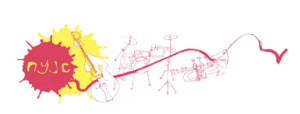
Advice on selecting repertoire
Choice of repertoire:
We’re really keen for all applicants to select two pieces that they’re completely comfortable with and which enable them to best demonstrate their skills and areas of interests within the jazz idiom, rather than two tunes that they feel obliged to play because they appeared on a repertoire list somewhere. Consequently, we really don’t want the following repertoire lists to be interpreted as a prescriptive syllabus, as this may inadvertently dissuade candidates from playing other tunes that might be equally suitable, but simply haven’t been included. To avoid this from happening we’re more than happy for applicants who are called to audition to email any concerns or queries they may have about their choice of 2 tunes to the Artistic Director c/o admin@nyjc.co.uk
The following information is simply intended to help guide the applicants on how and where they might source appropriate material as well as giving a table that includes a list of tunes that we feel are at the simplest end of the spectrum so that all applicants have a starting point, as well as providing a lengthier list at the end of tunes that are now regarded as being part of the jazz standard repertoire.
The most important thing when selecting the repertoire is that the two chosen pieces are contrasting and that they both have clearly notated lead sheets for the pianist so that the form and structure of the performance of each piece is given clearly, thus requiring the minimum amount of discussion and rehearsal time (see Check list for the accompanying pianist’s lead sheets and Example of a lead sheet)
Sourcing the repertoire: As long as the candidate provides the pianist with clearly notated lead sheets, we’re really not worried whether the parts have been taken from a published source (such as the ‘legal’ Real Book or the European real book or an artists’ songbook or the various jazz exam pieces or play along lead sheets that are now available) or are unpublished handwritten originals or transcribed tunes (with the relevant harmonic changes) from a recording. We are however really keen to encourage all applicants to listen to recordings of different artists playing their selected repertoire, so the candidate can get to know the music intimately: internalising the harmonic and melodic structure, absorbed aspects of the idiom that can only be learnt aurally and not off the page (such as feel, groove, phrasing, access to harmonic voicings and improvisatory language) as well as having access to hearing the different ways in which the same tune has been interpreted by the various musicians that have recorded it.
Original repertoire:
We’re extremely keen to encourage candidates that have been writing their own material to include an original composition as one of their two chosen pieces.
Transcribed solos: Learning other musicians’ solos is an excellent ways of learning the jazz language and should be a regular part of any jazz musician’s practice regime. During the audition however we want to hear the candidate’s own solo and so won’t be wanting to hear any performances of transcribed solos.
What we’re hoping to hear in the 2 chosen pieces:
- A strong, accurate and fluent interpretation of the head, with a clear count in, an appropriate choice of tempo, and an appropriate and informed interpretation that has a natural sense of feel, groove, phrasing and style.
- A clear out line of the tune’s form and motive content from the drummers (placing kicks and pushes that outline the natural accentuation of a bebop line for example and the occasional fill in the gaps between praises),
- A clear delivery of lyrics with a strong sense of storytelling from singers.
- Melodic solos that have a sense of shape and motive/rhythmic content within the harmonic parameters of the chorus’s chord progression.
- Interaction between the soloist and accompanying pianist.
